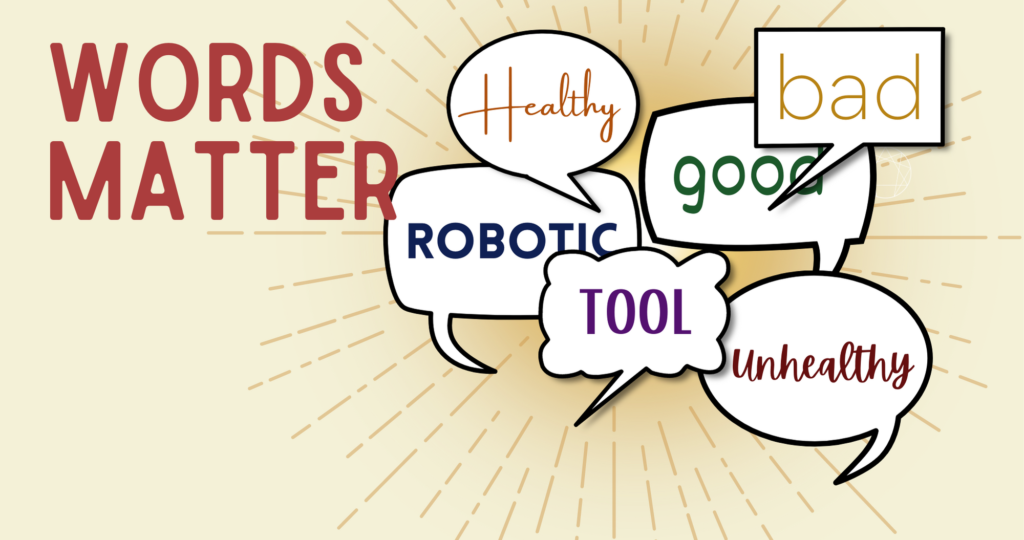Words and phrases I never use (or imply) when I teach the Enneagram
When we explain the Enneagram to others, our choice of words or phrases can make a big difference so I am both selective and careful about the words I use. Over my multiple decades of teaching the Enneagram, here are my top three (not to use) and why.
Healthy – Unhealthy
Of course, it is important to teach that individuals of the same Enneagram type may be different in many respects based on culture, use of arrows and wings, subtype and the amount of effective self-development work they have done. It is this latter issue, the level of self-development, which some get taught to use the words healthy, unhealthy, and something in between. I’ve sometimes heard the term “moderate health” as in between, but… when people learn the types as movement along a “healthy-unhealthy” continuum, they rarely refer to people who lie in-between. In fact, what I’ve heard most is that when people use this language, it is usually a person who thinks they are “healthy” talking about someone else who is, in their view, “unhealthy.”
Is this judging attitude one we want to foster when we teach the Enneagram? I think not! So what can we use instead? Here are some choices, all of which imply some assessment, but the judgment is not as harsh.
high-functioning – moderate functioning – low-functioning
high self-mastery – moderate self-mastery – low self-mastery
high-development – moderate development – low development
What words do you use? What are the implications of your word choice for those who learn from you?
Tool (when referring to the Enneagram)
I never refer to the Enneagram using the word tool. Instead, I use words like map, path, and/or system. Why not the word tool? The origins of the word tool come from Old English based on the Old Germanic word towlo, which means to make or prepare. In Old English, it means an instrument or implement. Common tools include hammers, screwdrivers, saws, all of which are based on a mechanical paradigm.
However, the Enneagram is not an instrument nor is it mechanical. It doesn’t do something to us; we work with the Enneagram and through it. In addition, the Enneagram is anything but mechanical. It and we are not machines nor do I want to treat myself, others or the Enneagram map as an unconscious, non-human system.
Enneagram type is bad (or good)
Are the Enneagram types good, bad, are both good and bad, or something else? Here I am not referring to the types in terms of their strengths (gifts) and development areas. I am referring to type in and of itself. Good, bad, mixed or something else? If you think a type is good, you may not be teaching or encouraging the development aspects for each type. If you think a type is bad, this will come across in your communication. You may hark on development so much that people feel there is something deeply wrong about themselves and others. You may use terms like robots or robotic, flaws or flawed to describe each type. These words reflect our thinking, and our thinking gets communicated to those we teach. Absent from them is the deeper experience of being human, compassion for ourselves and others and non-judgment.
I view each type as neither good nor bad, flawed or flawless, deficient or resourced. I simply view the types as human ego structures and, since we all have one, there must be a purpose for them! Maybe it’s about how we meet the challenges in our lives and how we then grow and transform.
Ginger Lapid-Bogda PhD, author of nine Enneagram books, is a speaker, consultant, trainer, and coach. She provides certification programs and training tools for business professionals around the world who want to bring the Enneagram into organizations with high-impact business applications. TheEnneagramInBusiness.com | ginger@theenneagraminbusiness.com


Comments are closed.